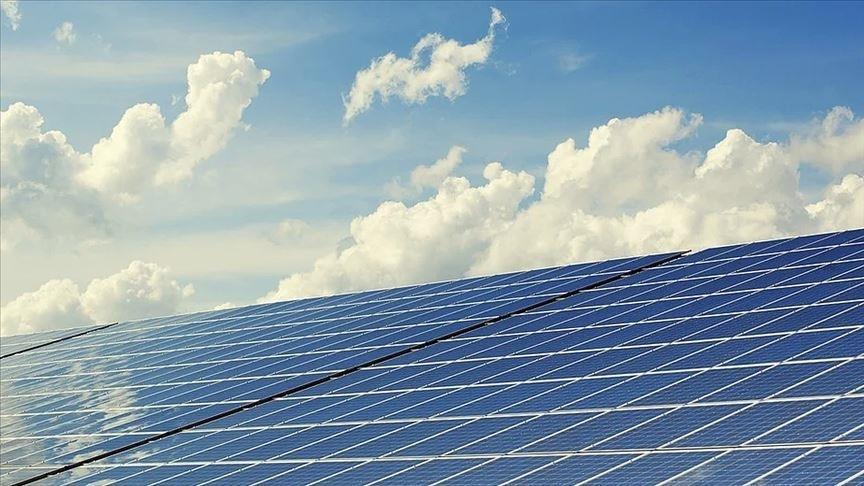

By Anadolu Agency
The global energy crisis, affected by Russia’s invasion of Ukraine, is causing long-lasting changes that have the potential to boost the transition to a more sustainable and secure energy system, according to the latest edition of the IEA’s World Energy Outlook (WEO) on Thursday.
The WEO warned that energy markets are extremely vulnerable, owing to the current complex geopolitical and economic issues, and serve as a reminder of the fragility and unsustainable nature of the current global energy system.
The report underlined that alongside short-term measures in an attempt to protect consumers from the impacts of the crisis, many governments are now taking longer-term steps through diversification and other transition measures.
‘Some are seeking to increase or diversify oil and gas supplies, and many are looking to accelerate structural changes. The most notable responses include the US Inflation Reduction Act, the EU’s Fit for 55 package and REPowerEU, Japan’s Green Transformation (GX) program, Korea’s aim to increase the share of nuclear and renewables in its energy mix, and ambitious clean energy targets in China and India,’ the report said.
One of the scenarios projected in the report, the Stated Policies Scenario, projected that new measures would help propel global clean energy investment to more than $2 trillion a year by 2030, a rise of more than 50% from today.
In this scenario, the report estimates that as markets rebalance, the upside for coal from today’s crisis will be as temporary as renewables, supported by nuclear power, see sustained gains. As a result, global emissions will reach a peak in 2025.
Commenting on the report, IEA Executive Director Fatih Birol said that energy markets and policies have changed as a result of Russia’s invasion of Ukraine and not just for the time being, but for decades to come.
‘Even with today’s policy settings, the energy world is shifting dramatically before our eyes. Government responses around the world promise to make this a historic and definitive turning point towards a cleaner, more affordable and more secure energy system,’ he explained.
-Fossil fuels to decline steadily
According to the IEA, for the first time ever, the WEO’s Stated Policies Scenario, based on today’s prevailing policy settings, has global demand for every fossil fuel exhibiting a peak or plateau.
In this scenario, coal use falls back within the next few years, natural gas demand reaches a plateau by the end of the decade, and rising sales of electric vehicles (EVs) mean that oil demand levels off in the mid-2030s before ebbing slightly to the mid-century.
This means that total demand for fossil fuels declines steadily from the mid-2020s to 2050 by an annual average roughly equivalent to the lifetime output of a large oil field. The declines are much faster and more pronounced in the WEO’s more climate-focused scenarios.
– Supportive policies require for more renewables
The report highlights that the current growth rates for deployment of solar PV, wind, EVs and batteries, if maintained, would lead to a much faster transformation than projected in the Stated Policies Scenario, although this would require supportive policies not just in the early leading markets for these technologies but across the world.
Supply chains for key technologies – including batteries, solar PV and electrolyzers – are expanding at rates that support greater global ambition.
‘If all announced manufacturing expansion plans for solar PV see the light of day, manufacturing capacity would exceed the deployment levels in the Announced Pledges Scenario in 2030 by around 75%. In the case of electrolyzers for hydrogen production, the potential excess of capacity of all announced projects is around 50%,’ the report said.
-Russia’s fossil fuel export levels will never return
According to the report, Russia has been by far the world’s largest exporter of fossil fuels, but its invasion of Ukraine is prompting a wholesale reorientation of global energy trade, leaving it with a much-diminished position.
‘All Russia’s trade ties with Europe based on fossil fuels had ultimately been undercut in previous WEO scenarios by Europe’s net zero ambitions, but Russia’s ability to deliver at relatively low cost meant that it lost ground only gradually,’ the report said.
The report declared this Russian trade loss has come with a speed that few imagined possible.
It foresees that Russian fossil fuel exports will never return – in any of the scenarios in this year’s WEO – to the levels seen in 2021, with Russia’s reorientation to Asian markets particularly challenging in the case of natural gas.
‘For gas consumers, the upcoming Northern Hemisphere winter promises to be a perilous moment and a testing time for EU solidarity – and the winter of 2023-24 could be even tougher,’ the agency said.
We use cookies on our website to give you a better experience, improve performance, and for analytics. For more information, please see our Cookie Policy By clicking “Accept” you agree to our use of cookies.
Read More